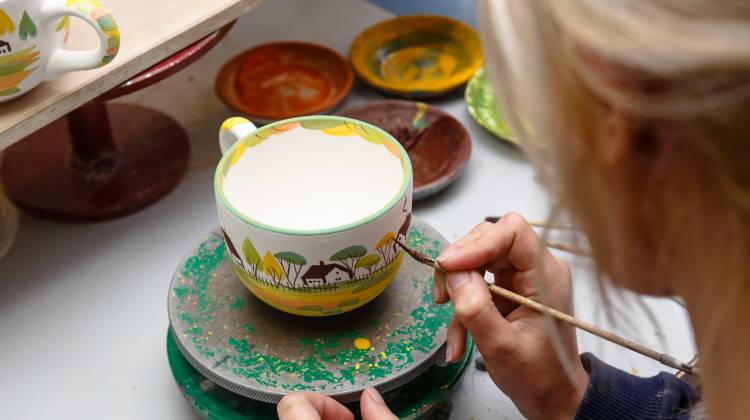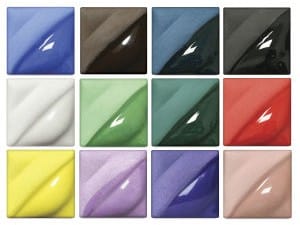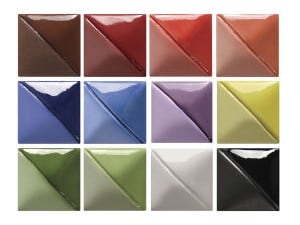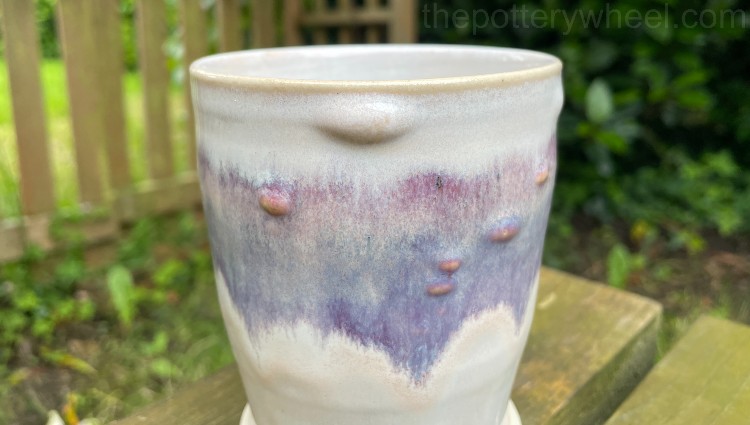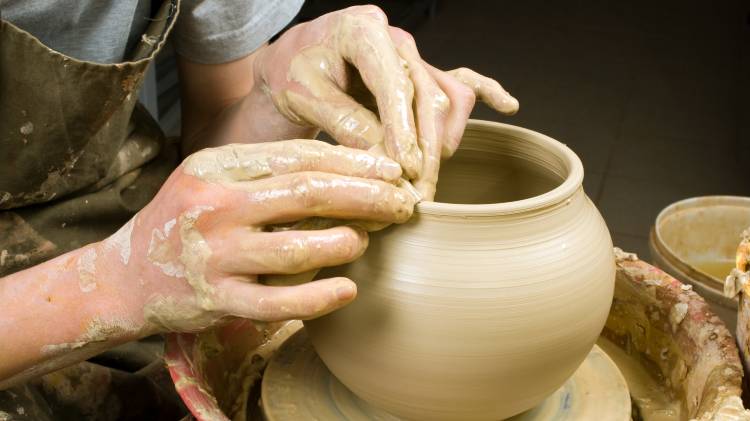These days, underglaze is usually applied first and then a clear or semi-transparent glaze is applied on top. But what happens if you do the reverse? Can you put underglaze on top of glaze?
Yes, you can put underglaze on top of glaze. However, it depends on what underglaze you use, and the combination of the glaze and underglaze being used together. Sometimes underglaze works well over glaze. Other times it will blister, peel, or create unexpected colors.
Read on to learn more about what works and what doesn’t work when applying underglaze over a glaze.
When Can You Put Underglaze Over Glaze?
Whether you can put underglaze over glaze successfully depends on a few factors. Underglaze, as we use the term today refers to products that have been designed to go ‘under’ glaze, rather than on top of it.
And it’s true that sometimes when you apply underglaze on top of a glaze you can encounter problems. Some of these problems are that the underglaze can peel off. Alternatively, it can look blistered or scorched, with a moonlike texture once it has been fired.
However, it is possible to put underglaze on top of glaze without encountering these problems. So, how is it done?
Here are some of the factors that affect if it will work:
- The type of underglaze you are using
- The way the underglaze and glaze behave when they are fired
- How the underglaze and glaze interact with one another
- The temperature that you are firing at
Some regular underglazes work well when applied on top of glaze, and other underglazes are specially designed to be used in this way. We will take a closer look at those brands later.
However, if you have a brand of underglaze and you want to experiment with it, the best thing to do is do a test run. Make some test tiles and apply your underglaze to the base glaze to see what they look like when they are fired. Test tiles are the best way to avoid spoiling a batch of pottery if you get an unexpected or unwanted result.
The History of Putting Underglaze on Top of Glaze
There is a long tradition of painting decorations on top of glaze called ‘majolica’. This technique, sometimes called ‘maiolica’ has been around since the 8th century, and has been practiced in different ways over the years. You can read more about the difference between majolica and maiolica in my guide to the history of tin-glazed earthenware.
Originally maiolica began when potters painted their ware with tin glaze. This was a lead glaze with a small amount of tin oxide added to make it into an opaque white base glaze. They then used a range of oxides to paint decorations on top of the unfired glaze base. This was then fired at low fire earthenware temperatures.
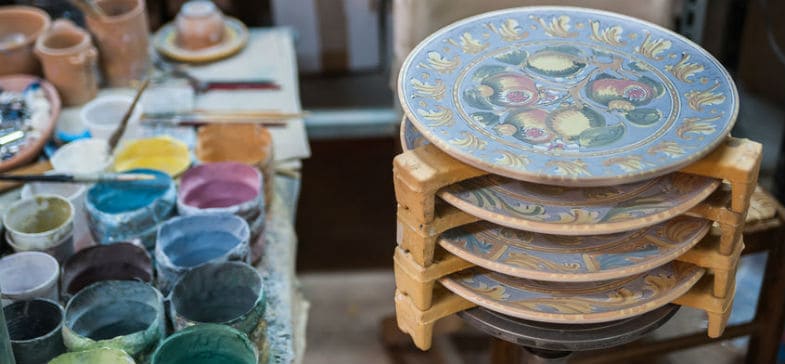
But in traditional maiolica and majolica, the colors used to decorate the glaze were usually simple oxides, which are different from the underglazes we use today. So, let’s take a closer look at what underglaze is…
What is Underglaze?
Underglaze is something that has developed over the years. Originally underglaze was much like a colored slip. It consisted mainly of clay particles suspended in water and colored with a stain.
However, over the years, underglazes have been developed and many now include other glass-forming ingredients. These melt when the underglaze is fired. Therefore, often underglazes behave a bit more like glaze than slip when they are fired.
The term underglaze is used to refer to different substances. For example, sometimes underglaze refers to a mix of clay, flux, and stain. At other times, underglaze is also used to refer to a coloring oxide mixed with a decorating medium like CMC gum.
So, some potters have a narrower definition of underglaze. Other potters have a broader definition, even including ceramic stains used on their own.
And different substances will respond differently to being applied on top of glaze. If an underglaze has a high clay content, this can cause problems when it is used on top of glaze. However, if you are using a stain mixed with little or no clay as an underglaze, then this is usually not an issue.
Applying Underglaze on Top of Fired or Unfired Glaze
The other question is whether you are applying underglaze on top of glaze that has been fired or not.
Applying Underglaze on Top of Unfired Glaze
The majolica technique involves painting decoration on top of unfired glaze. You can buy commercially produced underglazes that are specifically for the majolica technique. One example of this is the Spectrum Majolica 300 Series.
Most majolica underglazes are stains mixed with glass-forming ingredients and fluxes. Fluxes are substances that lower the melting point of the glass formers. As a result, when the pottery is fired, the majolica underglaze melts into the white glaze that it is sitting on. This is called inglazing.
Underglaze that has a high clay content can interact badly with glaze as the glaze melts. Underglazes that have a higher percentage of flux behave more like glazes and are more successful when inglazing. Amaco Velvet Underglazes and Mayco Fundamentals Underglazes work well for the majolica technique.
Applying Underglaze on Top of Fired Glaze
Another approach is to paint your underglaze onto fired glaze. The success of this technique also depends on the underglaze and glaze you are using.
One approach is to mix a colored stain with a decorating medium. A medium like CMC gum will help the stain stick to the glossy glazed surface. You can also mix in a little water in to make the mixture more liquid and the consistency more even. The mixture can be applied by brush or using a slip trailer.
If the underglaze mixture is made with the consistency of heavy cream, it creates a raised texture on the glaze a bit like slip trailing. Be mindful that if the stain paste is too thick it can blister off during firing.
If the decorated pottery is fired at earthenware temperatures, the underglaze will fuze to the glaze without melting fully. The texture of the pattern should remain on the pottery surface.
However, if the piece is fired to a hotter temperature, the base glaze will melt again. As a result, the underglaze melts into the surface of the glaze to create a smooth surface.
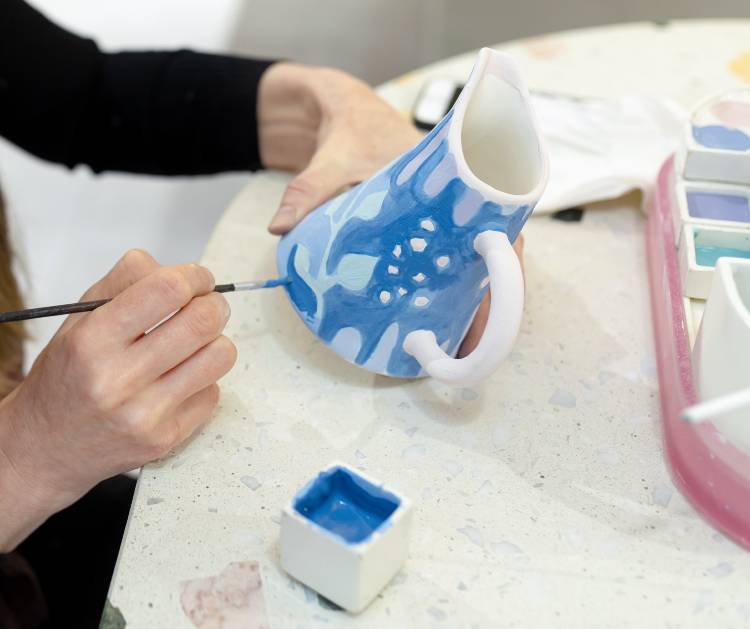
More Tips on Using Underglaze over Glaze
The success of your fired piece will also depend on the base glaze that you use as well.
Be aware that the resulting piece will depend on the glaze base too. Spectrum makes a white base glaze specially designed for majolica ware. You can check that out here.
Amaco also make opaque white glazes that can work as a base for majolica designs. Their opaque gloss white glaze is in their LG series and is Opaque White LG-11. They also make a matte white glaze called LM-11 that can be used as a white base.
If you already have a white glaze, you can try that as a base too. It’s a good idea to do a test tile first though to check that the underglaze and glaze you are using are compatible.
Some additional tips for using underglaze on top of glaze are:
- Add a little CMC gum to your glaze. This will harden it and reduce the chance that it will dissolve as you paint on the underglaze on top.
- Painting your underglaze on relatively thin can sometimes give a better result. And some of the white base will show through giving a traditional majolica look.
- If you mix a little bit of your glaze in with the underglaze, it will help the underglaze adhere.
Overglaze, an Alternative to Underglaze on Top of Glaze
While applying underglaze on top of glaze can work well, other ways exist to achieve a similar look. Here are some suggestions:
- Painting a white underglaze base and applying your colored underglaze decorations on top of that. You can then use a clear glaze on top of the white base and colored designs.
- China paints, also known as overglaze enamels are painted onto glazed pottery. You can put china paint on glossy or matte glaze.
China painting is quite labor-intensive in that you have to fire the piece between layers. It is fired at a low temperature to make sure that the glaze underneath does not start to melt.
These paints are translucent, so you do need to apply a few layers. They come in powdered form and need to be mixed into a paste with a medium.
The purpose of the medium is simply to create a paint mix so it can be applied to the glaze. The medium will burn off during the firing. You can buy commercially produced mediums or use a common household oil like baby oil or pine oil (source). - Lusters are another kind of overglaze technique. Like china paints, these are low-fire glazes applied to an already glazed surface. The difference with china paints is that they are usually metallic or mother of pearl.
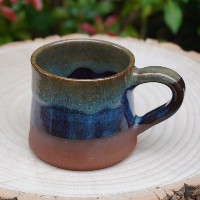
Visit The Pottery Wheel Store
Fancy treating yourself to some homemade pottery? Looking for a unique gift? Check out my handmade pottery store…
Final Thoughts
As the name suggests, underglazes are usually made to be used before pottery glaze is applied. However, there is a long tradition of painting colors on pottery that has already been glazed, and some modern underglazes can still be used in this way.
If you like to experiment or if, like me, you love the majolica look, then there are ways that you can successfully apply underglaze over pottery glaze. If you are interested in learning more about majolica pottery, you can take a look at my guide to majolica here.

